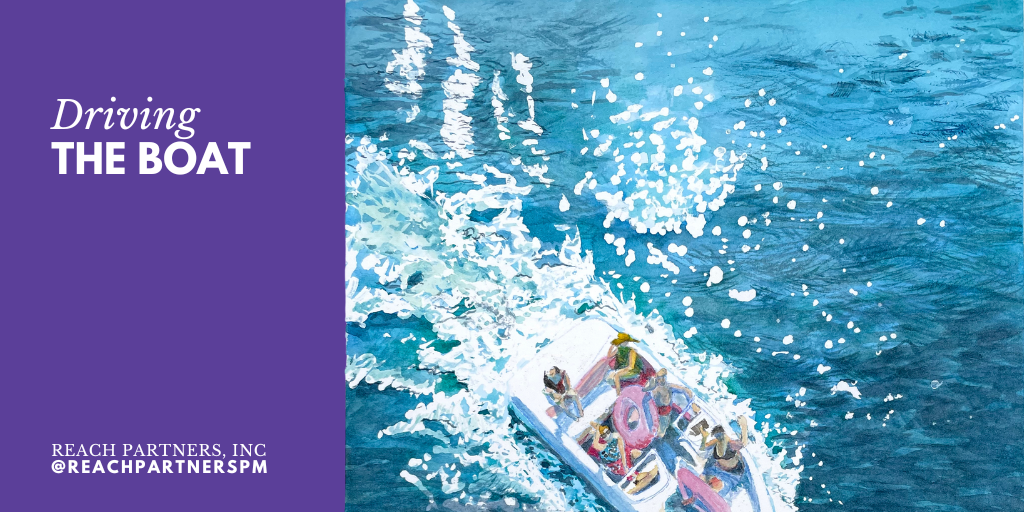|
My family and I recently enjoyed a vacation in North Carolina. We visited the beach, attended a professional hockey game, and cherished time spent together. We also toured the Battleship North Carolina. This ship participated in every major naval offensive in the Pacific theater of operations during World War II. It’s now an authentically restored National Historic Landmark. As we walked through the exhibits and learned more about the important role this ship played, I had an ah-hah moment. At Reach Partners, we often use the analogy “we drive the boat” with our clients. It’s a way to describe the role we can play when an organization needs assistance. In North Carolina, I started to question what kind of boat we drive. Raised in Minnesota and living in North Dakota, I always imagined a pontoon or a speed boat. That’s likely what most of our clients pictured too.
Here’s the deal about these types of watercraft: A single person can drive a pontoon or a speed boat. (Note: The exception is if someone is pulling a kid on a tube. My risk management tendencies would expect a second person to keep a close eye on the kid.) However, a single person can’t drive a ship. I discovered through some research that the person(s) who physically steer a ship are not high-ranking and do not have much authority over others; they follow orders from other senior officers. A ship is not driven by a single person. You need a whole team of people to work together to move in the same forward direction. That is exactly how Reach Partners works. We don’t show up, make the plans, and execute everything all by ourselves. We need others to help us steer toward a successful project or event. As it turns out, battleships have a team within the steering area of the boat (bridge). This team, including the person steering, manages how the boat travels. This driver is one of many members, each with important responsibilities to ensure a safe voyage to the intended destination. Together, this team considers route, speed, weather, time, etc. No one could do it alone. At Reach Partners, we also work to clarify who is responsible for what tasks, just like on a battleship. At the North Carolina Battleship, my kids sat in a mounted piece of equipment and realized quickly that one person controlled the movement left to right and the other person controlled the up and down function. They had to work together for the task. When I’ve told clients that “Reach Partners can drive the boat,” I’ve had this image of significant teamwork in mind. I certainly haven’t imagined our work to be like the causal pontoon (party barge) experiences many in our region enjoy on a lazy afternoon. Nor is it the solo fisherman approach. Instead, I see Reach Partners navigating the planned trip alongside capable experts, acting as an extension of the leader who needs our trusted partnership. – Anita
2 Comments
3/26/2024 02:19:29 pm
What a great analogy, Anita! I imagine that in the type of work Reach Partners does, you need to respond to a variety of factors that make the metaphorical waters you ply calm, choppy or wavy. But, as you said, teamwork helps the boat/ship continue to move forward. Beautiful.
Reply
Anita Hoffarth
4/17/2024 10:24:52 am
Thanks, Sarah! I love how you expanded the metaphor so accurately! And, yes, the water in the watercolor is super cool.
Reply
Your comment will be posted after it is approved.
Leave a Reply. |
Reach PartnersYour partners in leadership. Categories
All
Archives
July 2024
|
|
|
Reach Partners, Inc
3330 Fiechtner Dr. Suite 100 Fargo, ND 58103-2321 701-271-8170 Copyright (C) 2024 Reach Partners Inc.
|

